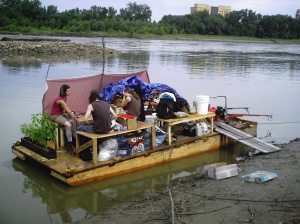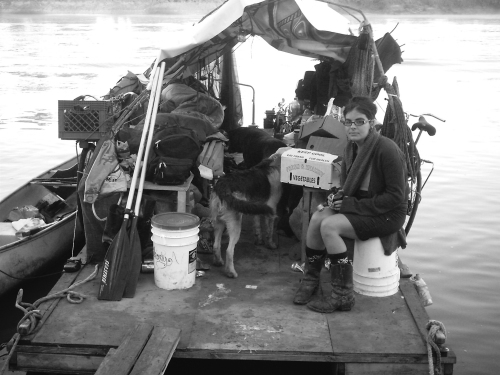

Materials needed:
- Stitched ornie
- Felt in coordinating colour
- Cardboard (I use mattboard)
- Batting
- Ribbon for hanger
- Glue
- Thread for lacing (I use crochet cotton or pearl cotton)
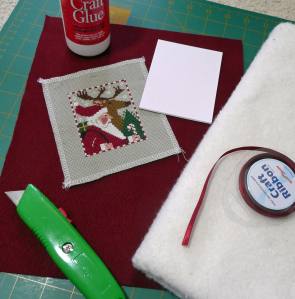
1. Firstly measure your stitched ornie for the size that you want the cardboard to be.
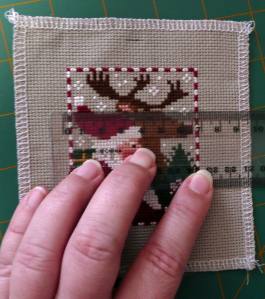
2. Next, cut out your cardboard/mattboard to the desired size. Add glue to one side of the cardboard, and place glue-side down on your batting. Even though I don’t show it in the photos, I actually smooth down the glue with a little offcut of mattboard so that the glue covers the cardboard evenly – that way you don’t feel ugly bumps on the front when it dries (my mattboard is black on one side, it just happened to be the piece that our local framers gave me). If you prefer to have your ornament more padded, you can add additional layers of batting in the same way, but make sure you only use glue sparingly on the additional layers of batting.
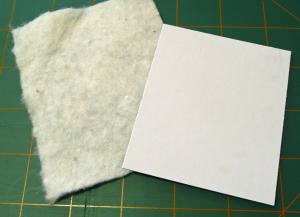
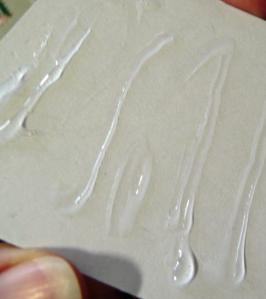
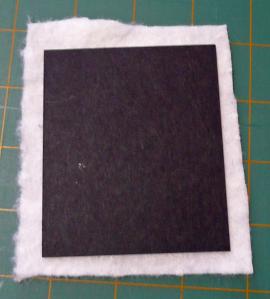
3. Once the glue has dried, cut around the cardboard shape and cut off the excess batting.
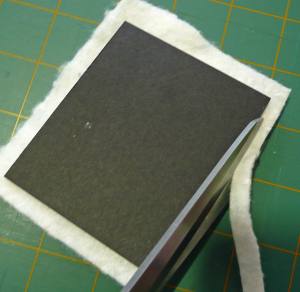
4. Now it’s time to attach the stitched piece to the padded mattboard.
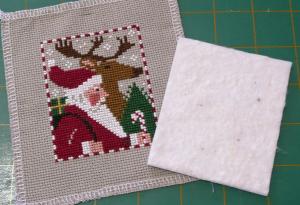
Turn the stitching over so the good side is facing down – place the padded mattboard padded-side down on top of the stitching.
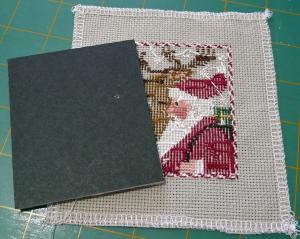

5. My instructions for the next part are in relation to lacing the ornie together – I’ve found that this gives a much cleaner finish on the front of the ornie, and in particular in the corners. If you don’t want to lace, you can just use glue to stick the sides down in the same way – you’ll just have to be careful that the glue doesn’t dry before you have the stitched piece nicely centred on the front.
6. First of all I start by folding over the corners, then the sides. This ornie was stitched by my Mum on Aida, which is quite stiff and stays put, which is great

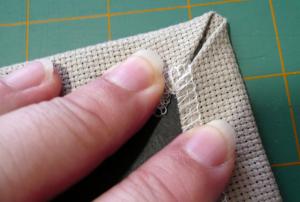
7. Next I start lacing – I usually start with a couple of little anchor stitches at the start, and use a waste knot to start with (this can be cut off later once the lacing is finished) – then you just work from one side of the ornie to the other, as you can see from the series of photos below.
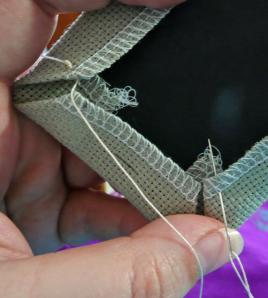
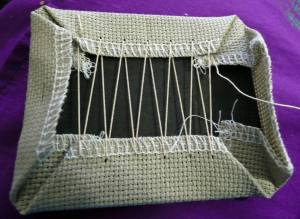
8. At this point turn the stitched piece over and check that the stitching is sitting nicely centred over the mattboard. If it’s not centred perfectly, just give it a little jiggle around until it is nicely centred.
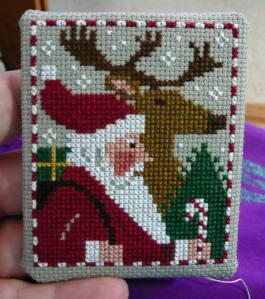
9. Turn the ornie back over again, and continue to lace the remaining two sides. Now I usually stitch up the mitred corners, as this really tidies p the corners and gives nice clean points.

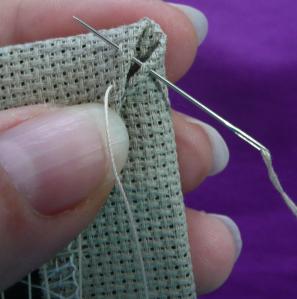
10. The finished version should look something like this if you’ve laced it according to my version.
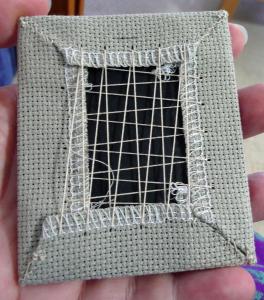

11. You now have the choice of adding your ribbon hanger now, or at the end. I always used to add my hanger at the end, but decided to try it this way for the tutorial, and have added the ribbon prior to adding the felt backing.
Cut a piece of ribbon to your preferred length – I ‘twist’ my ribbon to give it a nice loop, if you just fold it in half the ribbon doesn’t sit quite as nicely. Hopefully that makes sense, and you can see what I mean from the photos! Attach the ribbon with a couple of little stitches to attach it to the fabric – I prefer to stitch it rather than just gluing to ensure the ribbon hanger doesn’t fall off in a hurry.
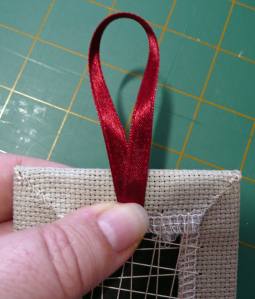
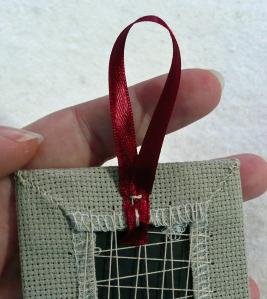
12. Next, turn your ornie over and add glue to the back – I usually use Tacky Glue and once again I use a little offcut of mattboard to spread the glue out all over the backing, but this isn’t essential. I figure this will help to keep the glue stuck down for longer than just having a little bit on the edges

13. Now place your glued ornie down on the felt backing and ensure the felt is pressed down nice and evenly onto the glue. Then, using pinking shears, cut around the ornie shape – don’t forget to hold your ribbon hanger out of the way so it’s not accidentally lopped off!
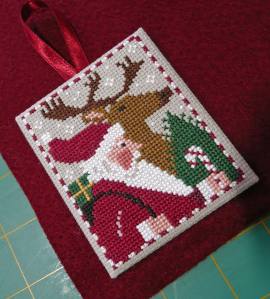
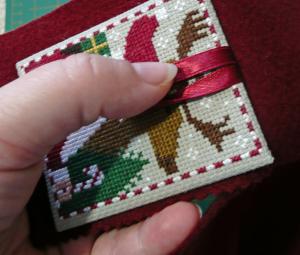
14. If you prefer to add your ribbon hanger at the

15. And you now have a beautifully finished ornie – all you have to do is to hang it up on your (or a loved one’s) tree!
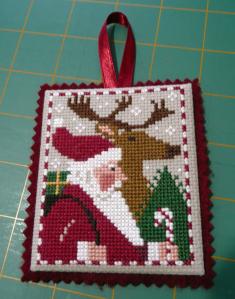
I hope that’s easy enough to follow – if you have any questions, don’t hesitate to scream out and I’ll try to answer them.
Original article and pictures take https://focusonfinishing.wordpress.com/2009/11/01/christmas-ornament-tutorial/ site












